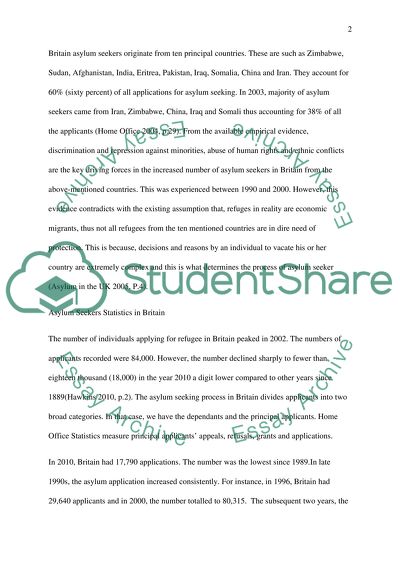Cite this document
(“Asylum Seekers and Refugee in Britain Essay Example | Topics and Well Written Essays - 2000 words”, n.d.)
Retrieved from https://studentshare.org/sociology/1446169-asylum-seekers-and-refugeesin-britain
Retrieved from https://studentshare.org/sociology/1446169-asylum-seekers-and-refugeesin-britain
(Asylum Seekers and Refugee in Britain Essay Example | Topics and Well Written Essays - 2000 Words)
https://studentshare.org/sociology/1446169-asylum-seekers-and-refugeesin-britain.
https://studentshare.org/sociology/1446169-asylum-seekers-and-refugeesin-britain.
“Asylum Seekers and Refugee in Britain Essay Example | Topics and Well Written Essays - 2000 Words”, n.d. https://studentshare.org/sociology/1446169-asylum-seekers-and-refugeesin-britain.


